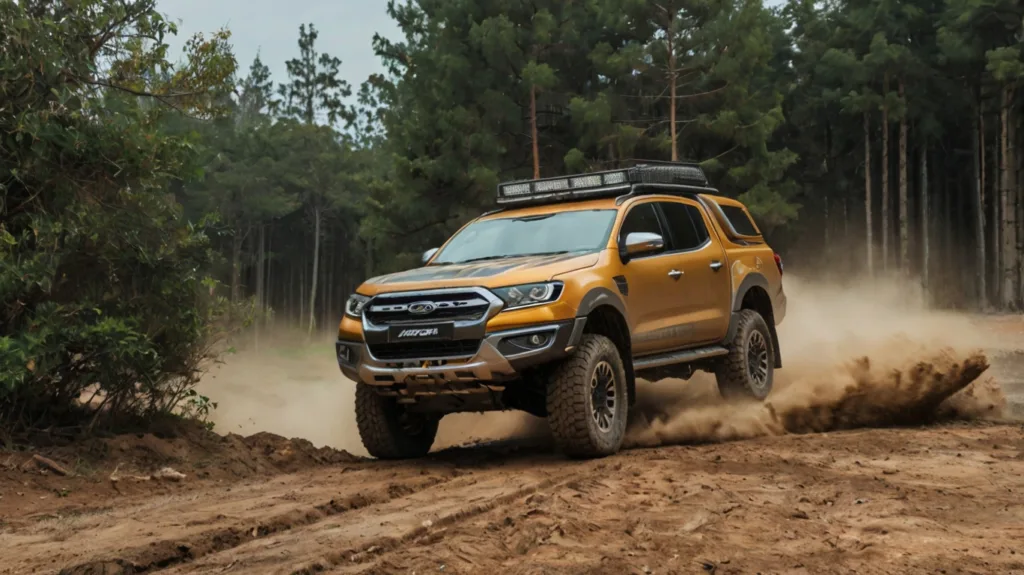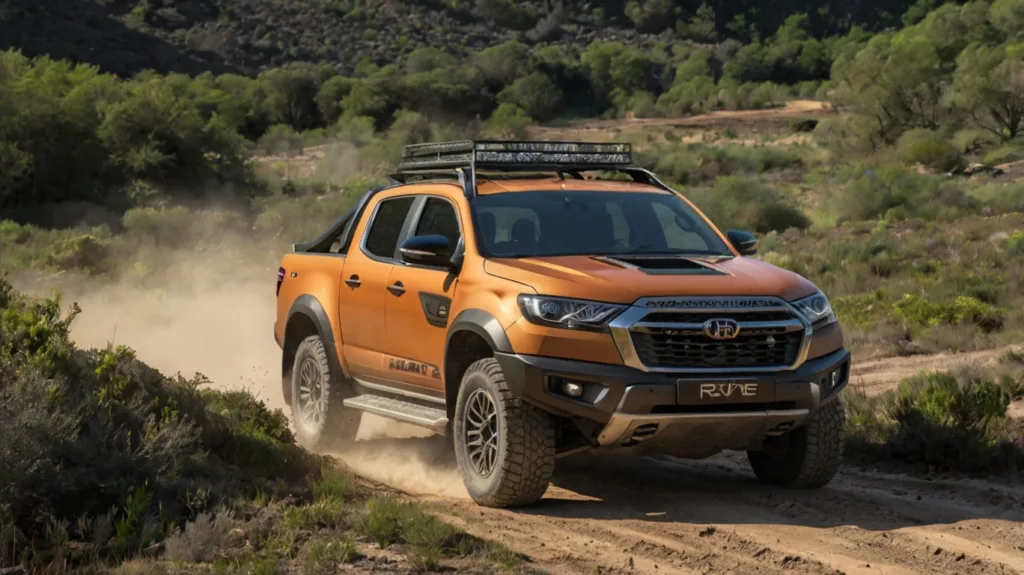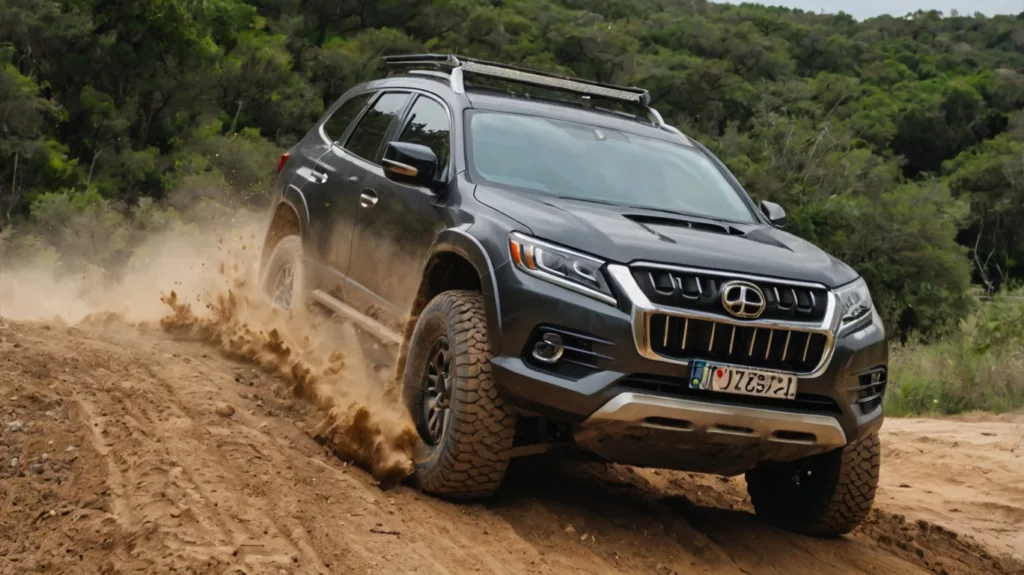Advanced Off-Road Driving Tips by mastering vehicle control and terrain analysis. Prioritize safety, maintain momentum on rugged trails, and know your vehicle’s limits.
Off-road driving, an exhilarating adventure many seek, demands more than just the ability to navigate unpaved roads—it requires precision, patience, and a deep understanding of your vehicle’s capabilities. Those who venture beyond paved surfaces soon find that conventional driving methods do not apply in the unpredictable world of rocks, mud, and steep inclines.
Seasoned off-road enthusiasts know that success hinges on mastering advanced techniques like vehicle recovery, choosing the right gear, and negotiating obstacles while minimizing environmental impact. To excel in this challenging activity, one must combine these skills with a thorough pre-trip planning and a flexible mindset ready to adapt to the ever-changing off-road conditions. With the right approach, off-road driving can be a rewarding pursuit, offering a unique way to explore the great outdoors.

Essentials Of Advanced Off-Road Driving
Off-road adventures demand skill, patience, and the right gear.
Success in the wild hinges on preparation. A well-equipped vehicle coupled with
savvy driver know-how conquers rough terrain. This post navigates through choosing
a robust ride and pivotal mods for off-road prowess.
Choosing The Right Vehicle
Your off-road journey starts with a reliable chariot. Not all vehicles suit the
rigors of uncharted paths. Assess terrain types before you pick.
Four-wheel drive stands as the cornerstone of off-road vehicles.
Look for high ground clearance and sturdy suspension. Jeep Wrangler and Toyota Tacoma
rank as trail champions for good reason.
Key Vehicle Modifications
Raw vehicular strength isn’t enough. Specific modifications turn a regular vehicle into
an off-road conqueror. Upgrades to ponder include:
- Tires: All-terrain or mud-terrain tires ensure better grip.
- Suspension: A lift kit increases clearance, vital for rocky trails.
- Skid plates: These protect your vehicle’s underbelly from damage.
- Winch: A lifesaver for when you or a buddy gets stuck.
- Snorkel: Allows your engine to breathe during water crossings.
Consider upgrades gradual. Each influences how your ride handles the rough.
Safety trumps flair. Aim for enhancements that boost both performance and protection.
Prepping For The Trail
Before hitting the bumpy trails, a smart off-roader gets ready. Prepping for the Trail is about more than just a full tank of gas. It’s map study, gear check, and knowing the dirt beneath your wheels. Let’s get your adventure started!
Packing The Necessary Gear
Smart packing makes off-road trips fun and safe. Never skimp on essential tools and supplies. Here’s what to include:
- Recovery Kit: Includes a tow strap, winch, and shackles.
- Navigation Tools: Don’t rely only on tech; carry physical maps.
- First-Aid Kit: Always be ready for any scrapes or bruises.
- Water and Snacks: Stay hydrated and keep energy up.
- Spare Tire and Jack: A must-have for unexpected flats.
Understanding Terrain Types
Terrains are diverse, and each type challenges drivers in unique ways. Here’s a quick guide:
| Terrain Type | Key Features | Driving Tips |
|---|---|---|
| Mud | Slippery and sticky | Keep momentum and steer clear of ruts. |
| Rock | Rough and uneven | Go slow, use low gears, and watch tire placement. |
| Sand | Loose and deep | Reduce tire pressure and avoid sharp turns. |
| Snow | Slippery and cold | Use snow chains and maintain a steady pace. |
Every trail is a new adventure. The right gear makes it smoother, and knowing the terrain keeps you on track.
Mastering Advanced Off-Road Driving Techniques
Off-road adventures challenge drivers to tackle unpredictable terrains. Mastery of off-road techniques assures both safety and thrill. This section provides advanced tips to navigate rugged landscapes.
Navigating Obstacles
Overcoming obstacles demands skill and understanding the terrain. Follow these steps:
- Assessment: Examine the obstacle from different angles.
- Approach: Choose the most stable path.
- Control: Moderate speed to avoid damage.
- Momentum: Maintain to ensure smooth passage.
Always keep your vehicle’s clearance in mind. It helps avoid getting stuck.
Water Crossing Strategies
Water crossings can be deceptive. Pay attention to depth and flow. Use these tips:
- Walk It First: If it’s safe, assess the crossing by foot.
- Low Gear: Engage low gear for better control.
- Steady Pace: Drive slowly to create a bow wave.
- Avoid Stopping: Maintain a consistent speed.
Protect vehicle parts like engines and electrical systems when planning a crossing.
Steep Incline And Decline Maneuvers
Tackling steep inclines and declines requires focus:
| Terrain | Tips for Success |
|---|---|
| Incline |
|
| Decline |
|
Balance is critical. Avoid sudden moves. Ensure load is secure.

Safety And Recovery
Mastering advanced off-road driving also demands a focus on safety and recovery. Preparing for any situation ensures a safe return from rugged adventures. This section delves into essential techniques and gear for off-road recovery.
Winching Basics
Understanding winching is crucial for any off-roader. It’s a primary method for vehicle recovery. Proper winch use can mean the difference between getting stuck or reaching your destination. Here’s what to know:
- Assess the situation before using your winch.
- Always wear gloves to protect your hands from cable burrs.
- Secure a solid anchor point; trees or boulders often work well.
- Use a tree saver strap to protect natural anchors.
- Keep bystanders at a safe distance during winching operations.
Use Of Traction Boards
Traction boards aid in vehicle recovery from sand, mud, or snow. Portable and user-friendly, traction boards provide grip where tires fail. Effective use steps include:
- Position boards under the tires pointing towards the direction of escape.
- Clear debris from the tire path to maximize effectiveness.
- Gently accelerate to prevent board damage.
- Once free, retrieve and store the boards for future use.
Critical Recovery Equipment
Invest in quality recovery equipment. Keeping these items on hand ensures preparedness:
| Equipment | Purpose | Notes |
|---|---|---|
| Shackles | Attachment | Secures ropes and straps |
| Snatch Block | Mechanical Advantage | Doubles the winch’s pulling power |
| Heavy-Duty Gloves | Protection | Shields hands during recovery tasks |
| Jack | Lifting | Essential for tire changes and underside repairs |
Remember, knowledge of your equipment is as important as the gear itself. Practice with your recovery tools before you need them in a real situation.
Responsible Off-roading
Thrill and adventure come with a duty towards the trails we explore.
It’s not just about conquering tough terrains; it’s about doing so with respect for nature and others. Let’s dive into responsible off-roading practices that ensure both fun and conservation.
Adhering To Off-road Etiquette
Good manners go a long way, even on dirt paths. Every off-roader should follow unwritten but understood rules of the trails.
- Stay on marked paths to protect untouched zones.
- Give way to uphill traffic; they need momentum to climb.
- Signal your intentions to fellow drivers clearly and promptly.
- Help others in need; someday, you might need a hand too!
Environmental Considerations
Caring for our planet is crucial when enjoying its landscapes. Here’s what you can do:
- Avoid waterways unless on designated crossings to protect aquatic habitats.
- Collect all trash; leave no trace behind.
- Respect wildlife; observe from a distance without disturbing.
- Engage in trail maintenance to give back to the paths you use.

Frequently Asked Questions On Advanced Off-road Driving Tips
What Are Essential Off-road Driving Skills?
Off-road driving requires mastering vehicle control on uneven terrain, understanding four-wheel drive systems, and learning precise throttle and brake use. Navigation skill is also crucial.
How To Prepare Your Vehicle For Tough Trails?
Equip your vehicle with proper off-road tires, a lift kit for clearance, and skid plates for undercarriage protection. Always check the fluid levels and condition of your brakes and suspension.
What Are The Best Off-road Driving Techniques?
Utilize high and low gear ranges effectively. Practice throttle control to prevent wheel spin. Learn the art of picking the right path and avoid sudden steering maneuvers to maintain stability.
How To Tackle Steep Inclines And Declines?
Approach steep angles straight on, using low gears, and maintaining steady momentum. For declines, use engine braking and go slow to prevent loss of control.
Conclusion
Embarking on an off-road adventure demands skill, preparation, and respect for the terrain. By embracing these advanced techniques, you’ve geared up for a safer and more thrilling journey. Remember, mastering control, anticipating obstacles, and maintaining your vehicle makes the difference.
Now, hit those trails with confidence and enjoy the ride towards mastery.


